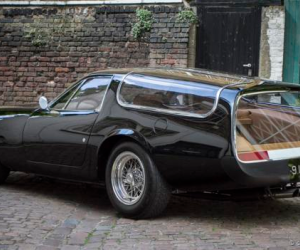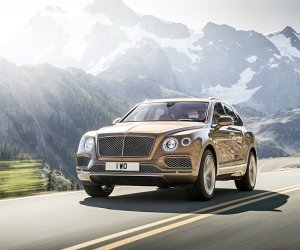World's biggest plane to launch in 2016

The world's biggest plane is set to take off early next year in its groundbreaking first test flight.
The aircraft, named the Stratolaunch Carrier, is currently under construction at Mojave Air and Spaceport in California, and will eventually have a wingspan of 385 feet (117 metres).
It will be so huge that if the plane sat in the centre of a football field, it would be wide enough for its wings to reach 12.5 feet (3.8 metres) beyond each goalpost.
The idea is for the aircraft to act as a giant air pad in the sky, allowing payloads to reach space faster and at a lower cost than existing technologies.
The craft is the brainchild of Microsoft co-founder Paul Allen and Burt Rutan, founder of Scaled Composites - the same company blamed by Virgin for the SpaceShipTwo crash in October.
Last week, Virgin said the flight breakup of SpaceShipTwo was down to: 'Scaled Composite’s failure to consider and protect against human error and the co-pilot’s premature unlocking of the spaceship’s feather system.'
But the tragedy- which killed one pilot, Michael Alsbury, and left his co-pilot Peter Seibold, suffering major injuries - has not slowed down work in the Mojave Desert, according to a report in Kern Golden Empire.
The company today confirmed to DailyMail.com that construction is going ahead as planned.
When its complete, the Stratolaunch Carrier aircraft will be powered by six 747-class engines.
Its 385 feet (117 metres) wingspan compares to 320 feet (97 metres) wingspan for the Hughes H-4 Hercules and 225 feet (68 metres) for the Boeing 747-8.
The plane will climb to 30,000 feet and launch a rocket at high altitude, avoiding the huge fuel costs of launching from Earth.
Initially, the system is intended to deliver satellites weighing up to about 13,500lbs (6,124 kg) into orbits between 112 miles and 1,243 miles (180 km and 2000 km) above Earth.
Instead of a satellite, the Stratolaunch airplane could also launch a Dream Chaser spaceship, which would be outfitted with an as-yet-unspecified upper-stage rocket motor.
'Dream Chaser seemed to be the logical way to go,' Stratolaunch Executive Director Charles Beames said in October.
'It could provide a highly responsive capability with the potential to reach a variety of LEO destinations and return astronauts or payloads to a U.S. runway within 24 hours,' Chuck Beames, president of Allen's Vulcan Aerospace added.
In April, billionaire Allen revealed that he had created a new company, 'Vulcan Aerospace', to oversee construction of the ambitious project.
The company will 'shift how the world conceptualises space travel through cost reduction and on‐demand access,' according to Vulcan Aerospace president Chuck Beames who made a presentation in Colorado Springs this week.
The Stratolaunch Systems project was inspired by SpaceShipOne which won the $10 million Ansari X Prize in 2004 for becoming the first privately funded manned vehicle to reach space.
'Stratolaunch's ability to launch from variable locations will enable satellites and humans to be efficiently inserted into their most optimal orbit at a time of the customer's choosing,' Beames wrote.
'Launching far away from populated areas (i.e. middle of the ocean) also significantly reduces public safety risk.
The rocket is being developed by Orbital ATK, and the designs uses solid-fuel lower stages and an upper stage powered by RL-10 engines.
But according to SpaceNews, Beames indicated that the company is also looking at other launch vehicle options.
'What we really want to do is focus on a lower-cost propulsion system that is evolvable in some fashion,' he said.
'We're still looking at Orbital as a potential option,' he said. 'We're widening our aperture to see if this is the right path forward.'
Stratolaunch could someday support several launch vehicles, he said.
As a result, Stratolaunch said it is temporarily halting work on a crewed vehicle that would launch on the Orbital ATK booster.
That company added that it is deferring work on a crewed vehicle that would launch on the Orbital ATK booster to focus more heavily on getting the Stratolaunch Carrier aircraft off the ground.
In February, the world received its first glimpse of a gigantic airplane.
Rare stills taken from footage shot for a recent news story by KGET 17, a Bakersfield TV station, show its huge size, according to a report by Guy Norris in Aviation Week.
The images show one of the two twin fuselage sections under assembly.
In the news report, Scaled Composites president Kevin Mickey says the company has so far built 'roughly 200,000lbs of composite structure' for the vehicle.
Each of the twin fuselages of the Stratolaunch Carrier aircraft is 238 feet (72 metres) long and, when complete, will be supported by 12 main landing gear wheels and two nose gear wheels.
Stratolaunch has produced computer-generated images and videos of the aircraft, but the TV footage was the first time images of the real vehicle have been shown.
Allen has previously said his project would 'keep America at the forefront of space exploration and give a new generation of children something to dream about'.
Several companies are competing to develop spacecraft to deliver cargo and astronauts to the International Space Station.
The Microsoft billionaire criticised the fact that government-sponsored space programmes are waning.
Nasa is paying Boeing and SpaceX to build the capsules and fly them from Cape Canaveral, which hasn't seen a manned launch since the shuttles retired in 2011.
(dailymail.co.uk)




www.ann.az
Similar news
Similar news




































 Photo
Photo 



 Video
Video 

